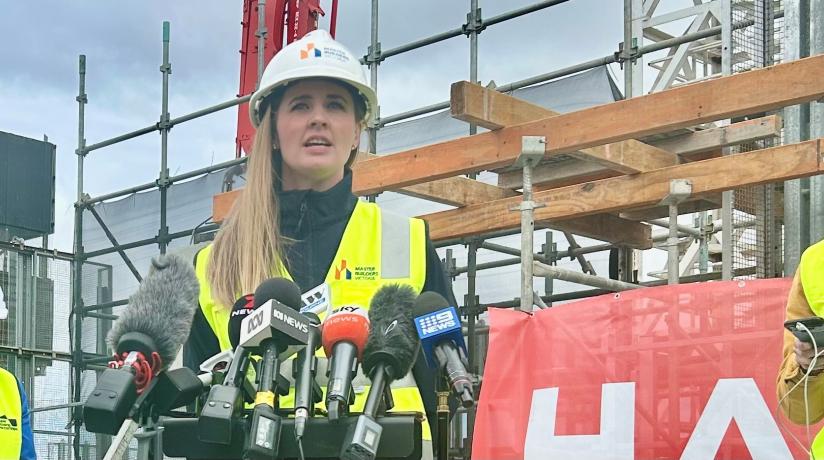The state government’s ambitious plan to build 80,000 homes a year – 800,000 across the next decade – is a vote of confidence for Victoria’s builders and a solid pathway ahead for the industry.
Master Builders Victoria acknowledges the housing statement, outlined today by Premier Daniel Andrews, signifies one of the most significant steps toward addressing demand.
But it must be accompanied by a rigorous stocktake of government policy and regulation to ensure the housing blueprint becomes a reality.
“Master Builders Victoria is committed to working collaboratively with the Victorian Government to achieve these ambitious housing targets,” CEO Michaela Lihou says.
“By addressing industry challenges, fostering innovation, and implementing legislative and regulatory changes, we can collectively create a sustainable and thriving housing sector for Victoria.”
A strategy to clear planning backlog, immediate legislative changes to cut red tape and a push toward streamlined planning via an expanded development facilitation program are welcome, Ms Lihou says.
But she says a staggered approach is needed to reach the annual target of 80,000 homes as the industry continues its recovery.
“Supply issues have eased but builders are still playing catching up,” Ms Lihou says.
To achieve its goal, Master Builders Victoria will work with the State Government to:
- Investigate investment in innovation across the industry;
- Look at fit-for-purpose standards and regulation; and
- Support efficiencies in manufacturing prefabricated products for site delivery.
Additionally, Master Builders Victoria anticipates having an active role as part of the Affordability Partnership between the Government and the housing industry, ensuring the necessary focus on investment and construction.
Ms Lihou says a substantial investment in innovation remains key to the industry's long-term sustainability and resilience.
“Our hope is that the housing statement will ensure an allocation of resources for research and development, a focus on new construction technologies and the promotion of sustainable building practices,” Ms Lihou says.
Ms Lihou says codified planning and fit-for-purpose regulation will also provide clarity and consistency, reducing delays and disputes.
“These changes will not only benefit the industry but also facilitate faster delivery of housing for Victorians.”
The government should also encourage the use of prefabricated products in construction, which can significantly speed up the building process while maintaining quality, Ms Lihou says.
Investing in prefabrication facilities and promoting their use will be instrumental in achieving the housing targets and has worked overseas.
Finally, Ms Lihou welcomes the commitment by government to review its progress.
She says it is essential for the government to work in tandem with industry stakeholders to develop strategies, particularly in relation to the supply of skilled labor.
“This can be achieved through apprenticeship programs, vocational training, and incentives for workforce development,” Ms Lihou says.
“A focus on skills and training is essential to ensure that the workforce can meet the increased demand for construction. Initiatives aimed at upskilling workers and attracting new talent to the industry should be a priority.”






